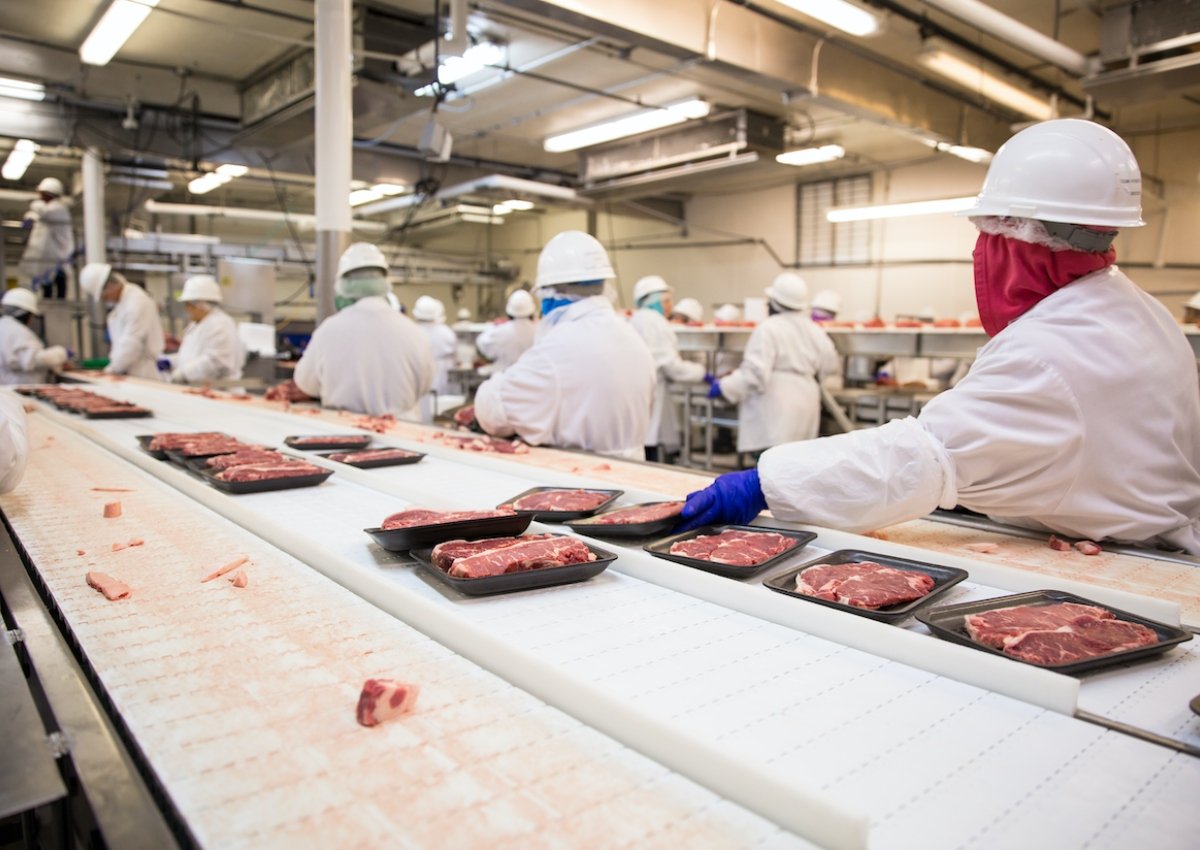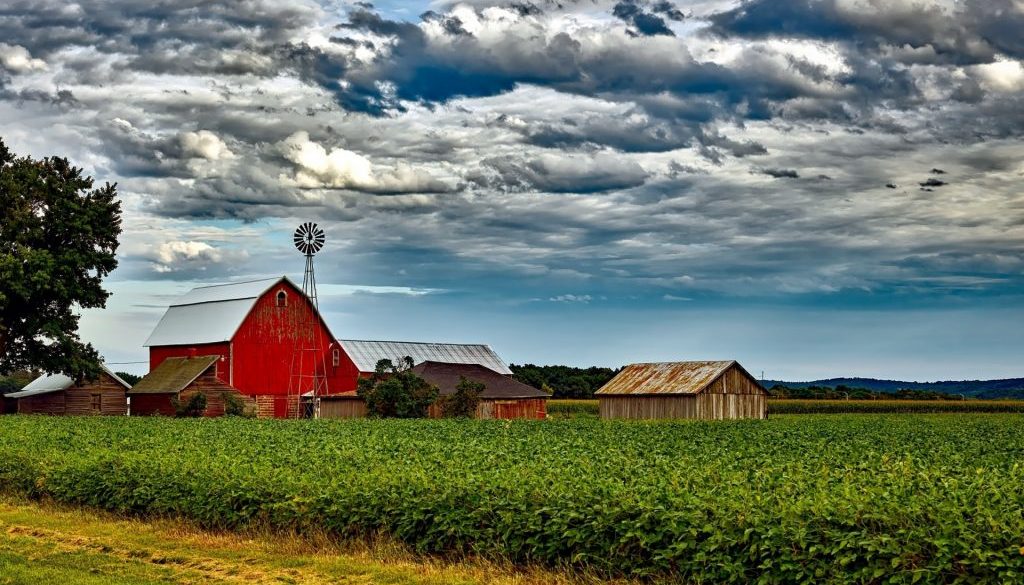What If Food and Farm Workers All Get Sick at the Same Time?
By Scott Faber, Environmental Working Group
More than 20 million people grow, harvest, pack, process, transport, serve and sell our food. The food and farm industry rivals the energy and health care sectors in terms of number of jobs.
But many of the people who feed us are unusually susceptible to the COVID-19 virus sweeping the nation. As more and more become sick, our food supply chains could quickly unravel, causing food prices to spike and increasing the number of Americans who struggle with hunger.
Millions of restaurant workers have lost their jobs as restaurants have been forced to close. But they and millions of grocery store employees, school service workers and delivery drivers continue to work without adequate protection. These workers are not only exposed at work but while traveling to and from work.
Grocery store workers are unusually susceptible to COVID-19. Cashiers and other grocery employees come into close contact with customers, increasing the chance the virus will spread. Thousands of grocery workers have gotten sick and dozens have died.
Now workers in meat-packing facilities are also getting sick, forcing the closure of two meat processing facilities so far. Workers in meat-packing facilities work shoulder-to-shoulder and use crowded spaces to eat and change clothes for work.

Photo: El Nariz via Shutterstock
While harder to document, farmworkers are also getting sick, just as the harvest seasonis about to begin. Although some farmworkers are able to spread out in fields, many migrant and seasonal workers are housed and transported in ways that increase the likelihood that the virus will spread. Migrant and seasonal farmworkers are often housed in hotels that have been converted to function like dormitories.

Photo: David A. Litman via Shutterstock
Despite the critical role food and farm workers play in our economy, few receive protections from the COVID-19 virus. Some food and farm companies have provided personal protective equipment, but the Occupational Safety and Health Administration, or OSHA, and the Department of Agriculture have not yet issued emergency standardsrequiring food companies to meet safety guidelines developed by the Centers for Disease Control and Prevention.
What’s more, many food and farm workers are not eligible for free COVID-19 testing. If they do become sick, many are ineligible for paid sick leave, increasing the likelihood that they will infect their co-workers. The Families First Act passed by Congress requires some employers to provide two weeks of paid sick leave, but many food and farm companies are exempt from the requirement.
Although they have been deemed essential workers, farm and food workers do not receive hazard pay to reflect the risks they face. Instead, in the middle of the pandemic, some Trump officials have proposed to cut wages for some farmworkers. Because many are undocumented, many food and farm workers are ineligible for health benefits other workers enjoy, such as Medicaid. As a result, undocumented workers are not only denied hazard pay and sick pay, but also lack access to health care, increasing the likelihood that the virus will spread as they continue to work.
Replacing sick workers will not be easy. Farmers were already facing labor shortagesbefore the pandemic. Now, fewer farm and food workers are migrating to the U.S. as borders tighten and officials have been slow to update the visa process to reflect the crisis. What’s more, food and farm work can be difficult, dangerous and poorly compensated, so food processors and farm labor contractors may struggle to find other workers willing to risk their lives to work in meat plants, packing sheds or produce fields.
What would happen if tens of thousands of these workers got sick at the same time?
Food prices are mostly driven by the cost of labor, transportation and marketing, not by the wholesale price of ingredients. While the salaries earned by food processing workers and farm workers are near or below the poverty line, the cost of labor is often a major factor in the price of food.
The price effect of these factors varies greatly among food categories and regions. But, aside from meat and dairy, the price of crops typically has little impact on the price of food sold in grocery stores and restaurants. So as more food and farm workers become sick and food and farm labor costs increase, the retail price of food will likely increase as well. Food already accounts for 12 percent of household spending, but the poorest Americans spend about one-third of their income on food.
What should policymakers do to protect our food supply chains from COVID-19?
First, OSHA and the USDA must be directed to issue emergency standards that require employers to provide personal protective equipment, enough space to work without spreading the virus, and housing and transportation options that will reduce the spread of the virus.
Second, food and farm workers should be provided hazard pay — not a pay cut, as some have proposed — to reflect the risks they take and to attract new workers as others become sick.
To reduce transmission of the virus among workers, all food and farm workers should be provided free testing, two weeks of paid sick leave, regardless of the size of their employer, and access to health care, such as Medicaid. Because many food and farm workers are undocumented, these and other benefits should be provided regardless of immigration status, including state benefits such as child care and overtime pay.
Third, USDA programs to purchase surplus commodities should be quickly expanded to offset the impacts of supply chains disrupted by school, hotel and restaurant closures.
Food that might otherwise be destroyed should be redirected to food banks, and more resources should be provided to food banks. To ensure that farm and food workers can feed themselves, policymakers should increase the standard SNAP benefit, commonly known as food stamps, by 15 percent and suspend rules that would limit assistance.
Fourth, disaster programs intended to help farmers impacted by COVID-19 should be tailored to help struggling farmers who serve local markets. Farm foreclosures should be postponed, loans to small family farms should be expanded and aid to farmers should be streamlined.
Fifth, policymakers should ensure that the USDA, Environmental Protection Agency and the Food and Drug Administration enforce laws that keep our food supply safe, especially environmental laws that protect farmworkers from pesticides and laws that limit line speeds in meat and poultry processing. Critical rules have already been rolled backduring the COVID-19 crisis, including food inspections. Even though workers are getting sick, USDA is moving forward with proposals to privatize inspections in chicken and pork processing plants.
The safety of our food and farm workers must be our top priority as policymakers develop the next COVID-19 stimulus bill.
Thousands of food and farm workers are getting sick and, in some cases, dying from illnesses caused by COVID-19. But policymakers have so far done nothing to ensure that these essential food and farm workers have adequate safety protections. Actions taken so far to provide access to COVID-19 testing and paid sick leave exclude many of these essential workers. Nor have policymakers undertaken the steps needed to ensure that farm and food workers receive hazard pay for the risks they face.
Farm and food workers are working long hours, at enormous personal risks, to feed us. Congress, the USDA and OSHA must make every effort to protect these essential workers and recognize the critical contribution they are making to our nation. Food and farm workers have always taken care of us. Now we must take care of them.

